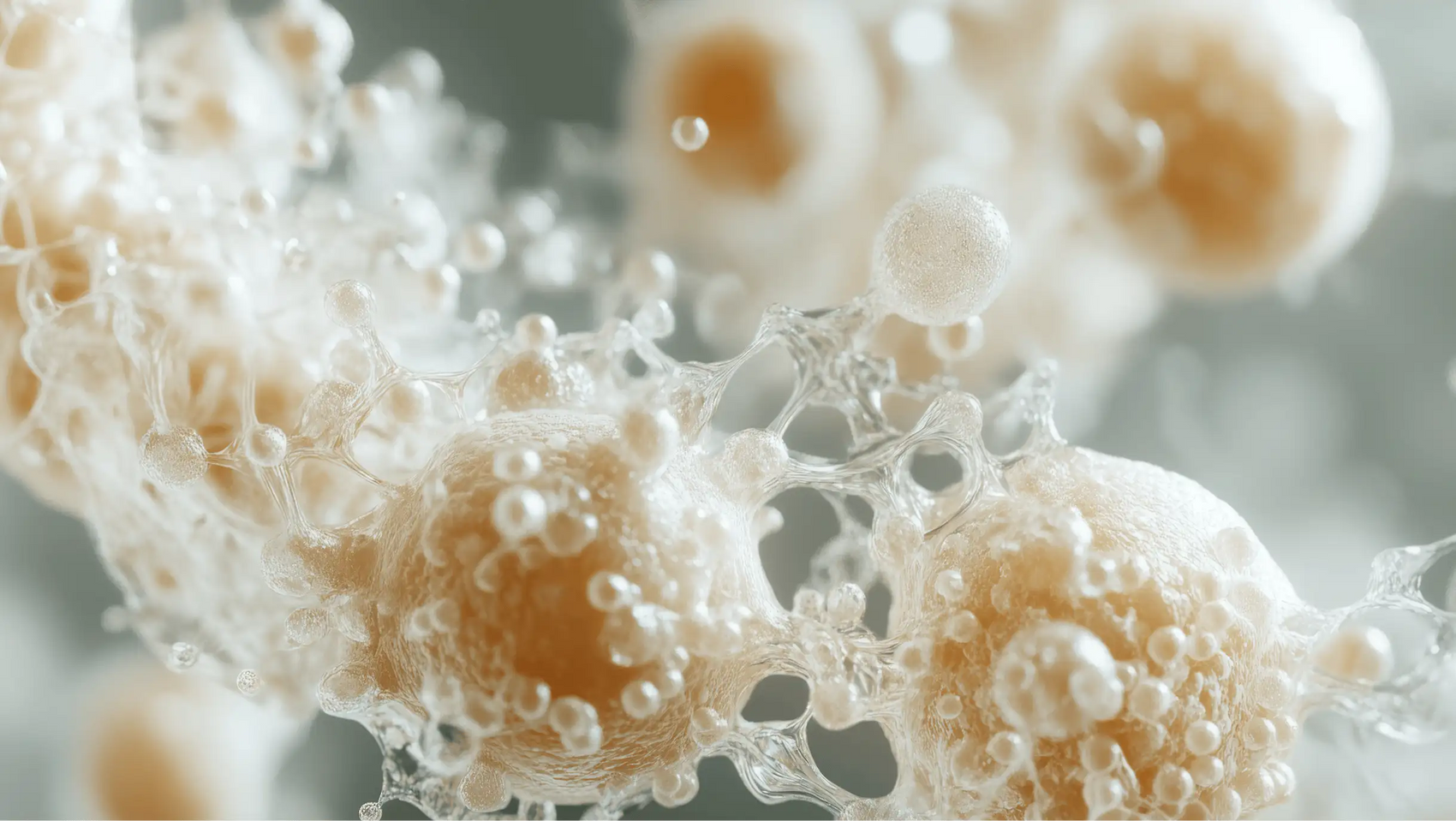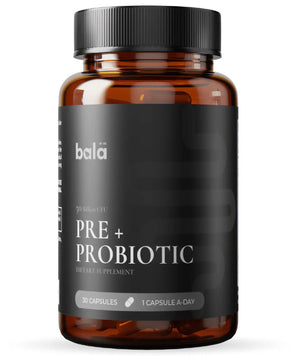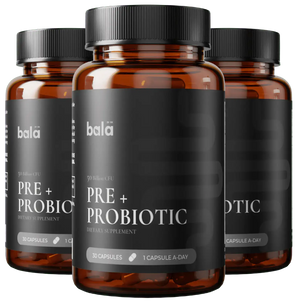Table of Contents
Article Summary
Discover what are the top foods to eat to lose weight and boost your health. Learn about protein, fiber, healthy fats, and hydration strategies today!Introduction
Did you know that nearly 70% of our daily caloric intake comes from ultra-processed foods? This staggering statistic highlights the challenges we face in making healthy choices, especially when it comes to weight management. With endless diet trends and conflicting information at our fingertips, knowing what truly supports our health can be overwhelming. Are you tired of feeling confused in the grocery store aisle or frustrated by inconsistent results from your weight loss efforts?
At Bala Health, we believe that understanding nutrition is key to achieving our health goals. This blog post is designed to simplify your journey, giving you insights into the top foods that can help you lose weight while promoting overall wellness. We will explore a variety of nutrient-rich foods that not only assist in weight loss but also support digestive health, which is a cornerstone of our philosophy at Bala Health. By understanding how these foods work, you can make informed decisions that lead to lasting change.
We will cover the following key aspects:
- The role of high-protein foods in weight management.
- The benefits of fiber-rich foods for satiety.
- How healthy fats can be supportive in your weight loss journey.
- Exploring the effects of hydration and nutrient timing.
Let’s dive into this essential guide to understand what foods can help you feel full, satisfied, and empowered on your weight loss journey.
The Power of Protein
Why Protein?
Starting our day with protein can set the tone for our dietary choices. Research indicates that incorporating high-protein foods in meals can help reduce hunger and increase feelings of fullness. This isn't just a fleeting effect; protein contributes to higher satiety levels throughout the day. Think about foods like eggs, skinless chicken breast, and legumes that we can integrate into our meals for sustained energy.
- Eggs: A breakfast staple for many, eggs are nutrient-dense. Studies show that individuals eating eggs for breakfast tend to consume fewer calories later in the day. They're high in protein and nutrients, perfect for a satisfying start to your day.
- Skinless Chicken Breast: This lean meat is a fantastic protein source and can easily be incorporated into various meals, whether grilled, baked, or sautéed.
- Legumes: Beans such as chickpeas and lentils are not only high in protein but also packed with fiber, making them doubly beneficial.
Would you like to discover a personalized approach to your weight management? Take our 3-minute Weight-Loss Quiz to find your path.
Practical Tips for Incorporating Protein
- Breakfast Choices: Start your day with an omelette or scrambled eggs mixed with veggies and black beans for added fiber and nutrients.
- Lunch Ideas: A chicken salad topped with avocado provides protein and healthy fats, keeping you satiated until dinner.
Need help ensuring you're getting adequate protein in your diet? Check out our clinically-backed probiotic, which may support your digestive health, aiding in protein absorption and overall wellness.
The Role of Fiber
Why Fiber Matters
Fiber is not just a buzzword; it’s a key player in weight management. Foods that are high in fiber take longer to digest, helping us feel fuller for extended periods. They also help stabilize blood sugar levels, which can minimize cravings and overeating.
- Leafy Greens: Kale, spinach, and collards are good examples. They are low in calories but high in volume and nutrients, making them perfect for weight loss.
- Whole Grains: Opt for quinoa, brown rice, or oats instead of refined grains. Whole grains contain more fiber and nutrients that can keep you full longer.
- Fruits and Vegetables: Berries, apples, and cruciferous vegetables are excellent sources of fiber. Incorporating these into your diet can aid in digestion and enhance satiety.
Tips for Increasing Fiber Intake
- Snack on Fruit: Choose high-fiber fruits like pears or apples to satisfy your sweet tooth while aiding digestion.
- Bulk Up Meals: Add beans to soups or salads to increase the fiber content significantly.
Curious how fiber can fit into your equation for weight loss? Take our Weight-Loss Quiz today.
EmbracingHealthy Fats
The Benefits of Healthy Fats
In a world where low-fat diets have dominated, it’s crucial to understand that not all fats are detrimental to our health. Healthy fats can actually aid in weight loss by promoting satiety and improving nutrient absorption.
- Avocados: Packed with monounsaturated fats, avocados can help keep our cravings at bay while adding a creamy texture to meals.
- Nuts: A handful of almonds or walnuts can be a great snack option. They provide protein, healthy fats, and fiber, but be cautious with portions due to their calorie density.
How to Incorporate Healthy Fats
- Dress Your Salads: Use olive oil-based dressings to add healthy fats that improve flavor and fat-soluble vitamin absorption.
- Breakfast Boost: Add sliced avocado to your morning toast or incorporate nuts into your oatmeal for an energy boost.
Want to kick-start your journey to better gut health? Shop our clinically-backed probiotic now to support your overall health, especially as you incorporate these nutrient-rich foods into your diet.
Hydration and Nutrient Timing
The Importance of Hydration
Hydration plays a vital role in weight loss. Drinking enough water not only helps perform metabolic functions but also can curb appetite. Often, we misinterpret thirst for hunger, leading to unnecessary snacking.
- Water-Rich Foods: Foods like watermelon, cucumbers, and oranges are high in water content and low in calories, making them ideal for snacking.
- Warm-up with Soups: Incorporating broth-based soups before a meal can fill your stomach with fewer calories. This can lead to reduced food intake during the main meal.
Tips for Staying Hydrated
- Start with Water: Begin each meal with a glass of water. This can aid digestion and support satiety.
- Opt for Herbal Teas: Sip on herbal teas throughout the day for added hydration without calories.
Practical Meal Ideas for Weight Loss
- Breakfast Smoothie: Blend Greek yogurt, spinach, a banana, and a tablespoon of nut butter for a protein-packed meal.
- Lunch Salad: Combine mixed greens, grilled chicken, avocado, chickpeas, and a light vinaigrette for a nutrient-dense lunch.
- Snack Ideas: Keep healthy snacks on hand like carrots with hummus or a handful of nuts for when hunger strikes.
Conclusion
In conclusion, achieving weight loss is much more than often-repeated notions of calorie counting. It's about making informed nutritional choices that create a satisfying and enjoyable experience. By incorporating high-protein foods, fiber-rich choices, healthy fats, and mindful hydration into our daily diets, we can take substantial steps toward our health and wellness goals.
Are you ready to make those changes? To personalize your weight loss journey, don’t forget to take our Weight-Loss Quiz today. And remember, our Bala Health Probiotic can support your gut health as you embark on this exciting transformation.
FAQs
1. How can I incorporate protein into every meal? Start by adding a protein source to each meal, such as eggs in breakfast, chicken in lunch, and legumes in dinner.
2. What are some good snack options for weight loss? Healthy snacks include nuts, Greek yogurt, fruits, and chopped vegetables with hummus.
3. Can I lose weight by focusing solely on certain foods? Weight loss typically requires a holistic approach including balanced nutrition, routine physical activity, and lifestyle adjustments.
4. How can Bala Health’s probiotics assist with weight loss? While our probiotics do not claim to induce weight loss, they can support gut health and digestive balance, which can be beneficial to overall health and wellness.
By following these guidelines and making dietary adjustments, we can work towards achieving our wellness goals together. The journey is yours, and we’re here to support you every step of the way!







